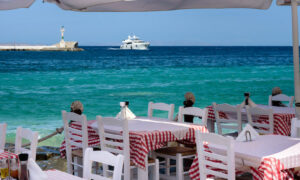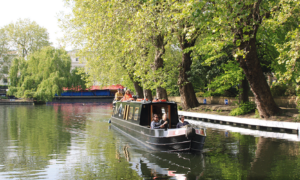Last month, I had the chance to visit London for the first time.
For years, I flew in and out of Heathrow, but never had a layover long enough to go into the city. As a lifelong Anglophile, I knew that I had to remedy this straightaway as the Brits would say.
So when my daughter advised me she would be rowing on the Thames in the Women’s Head of the River Race, I booked tickets for her older sister and me and began the countdown to the day I would finally get to see Big Ben, London Bridge, and Westminster Palace.
London didn’t disappoint. The architecture was quite grand, the shopping was great, and we actually got to see the Queen.
But oh, the London Underground!
A model of efficiency and engineering
 From Canary Wharf to Kensington and Wimbledon to Waterloo (and, of course, a stop at Platform 9 3/4 at King’s Cross), we rode the trains for days with no reason to take any other form of transportation.
From Canary Wharf to Kensington and Wimbledon to Waterloo (and, of course, a stop at Platform 9 3/4 at King’s Cross), we rode the trains for days with no reason to take any other form of transportation.
I am no stranger to public transportation. I have taken the Amtrak from Chicago to New York, been a passenger on Greyhound and MegaBus, and am a veteran of the German S-Bahn and U-Bahn, modes of travel which range from mediocre to competently effective.
But London’s Underground (or the Tube as it is affectionately known) is a model of efficiency and engineering.
Transporting 1.3 billion passengers annually, the system wisely adopted the use of contactless smart cards (Oyster cards) in 2003 and also allows passengers to use Apple Pay on their smartphones and watches.
Passengers use one of these paperless systems or scan a paper ticket to go through the turnstile and enter a maze of tunnels that covers 250 miles of track. Not sure which line to take? There’s an app for that.
Karma played a part in our travels that weekend.
Two girls came running down the platform at one of our stops, but only one of them made it on the train. I laughed to myself as I watched the faster one mime to her friend that she would meet her at their final destination.
The next day, my oldest daughter made it on the train and my younger daughter and I had the doors shut in our faces. But, in both cases, it mattered not at all, as another train comes along every few minutes.
London Underground more than just transport
 While I marveled at the efficiency of it all, I also admired the urban aesthetic of the stations and platforms.
While I marveled at the efficiency of it all, I also admired the urban aesthetic of the stations and platforms.
At Tottenham Court Road, we were treated to the mosaics of Scottish pop artist, Sir Eduardo Paolozzi.
Musicians played in several of the 35 official “busking pitches.”
A backpacker sat down at a decorated “street piano” in Canary Wharf and followed its command to “Play Me, I’m Yours.”
And I discovered the poetry of Elizabeth Jennings, whose poem “Delay” was printed alongside route maps and theater ads on the car panels of the Jubilee Line as part of the Poems on the Underground project.
I look forward to going back to London again next spring to see my daughter’s rowing team race on the Thames. And I look forward to rejoining the teeming crowds of commuters and tourists on the Tube.
About the author:
Beth Hoke is rejoining the expat life after spending her childhood in Europe and the United States, then settling in Chicagoland to raise two daughters.
Now an empty nester, she is roaming Europe, armed with a TEFL certificate and an online position teaching English for EF.














